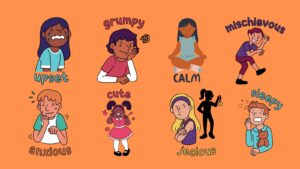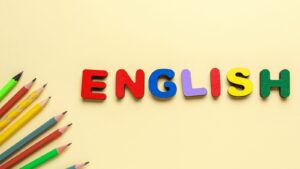Let us begin with the most basic question: what exactly is “synthetic phonics”?
To “synthesize” means to combine parts or elements together. Using the term “to synthesize” in a literacy context therefore means to combine sounds together in order to make words. It is rather like having pieces of a puzzle: isolated and on their own they may not make much sense to us but once we put the pieces of the puzzle together we can then derive meaning from the whole “picture”.
As children become familiar with the sounds in a language in order to read words, they also receive instruction on how to listen for and identify specific sounds that supports them when writing and spelling words.
Synthetic Phonics vs the “Whole Language Approach”.
In the simplest terms, the “whole language approach” encourages children to read by sight rather than sounding out words. It advocates the use of mixed approaches or “cues” which help children to predict or guess words on a page using a variety of methods such as context clues, pictures, the shape of words, memorization techniques and looking at the initial (first) sound. In short, words are memorized as whole units.
This makes learning to read exactly like memorizing the telephone directory.
(Growing a Reader from Birth by Diane McGuinness)
One problem with this method of teaching is that many words may look alike. For example, both “hose” and “horse” begin and end with the same letters and they are similar in length yet both words are very different. Another problem with the whole language approach is that some children may not have particularly good memory skills. This may not be apparent at first if short words are introduced, however when progressing on to longer, more complex words such as “butterfly” and “beautiful”, children begin to struggle and fall behind their peers, leading to confusion, discouragement and a dislike of reading and writing.
A Synthetic phonics programme, however, introduces the sounds of a language in a systematic manner using a code. This means that children do not need to “guess” the words on a page but rather they are able to combine the parts of the puzzle on their own. Reading and writing instruction is cumulative as children are asked to read and write words that gradually become more complex as the children´s knowledge of the alphabetic code increases.
Struggling readers have been observed to rely on context cues more than children who are able to read or decode text. The purpose of a good synthetic phonics programme however is to give all children a systematic and functional working knowledge of how the sounds in the English language are used, thus enabling them to read, write and spell with greater success and confidence.
The English Alphabetic Code? Let´s Crack it!
English is a rather tricky language that has been described as having one of the most complex alphabetic codes in the world. It has an opaque writing system, which means that it is not clear quite how it works.
In contrast, Spanish has a transparent code, which means that it is a fairly predictable language. On hearing the sound of a word, you should generally be able to work out how to spell it and vice versa. Therefore, learning to read and write in Spanish is fairly easy to learn and teach, whereas learning to read and write in English is not.
There 26 letters in the English alphabet but approximately 44 sounds. The letters of the alphabet are used in order to be able to write words, yet the letter “names” A-B-C, etc are not very helpful when it comes to reading or spelling words.
Sounds in the English language can be spelled in a variety of different ways, for example: rain, day, cake, eight, sorbet, grey and vein. Great! Moreover, sounds can also be read in different ways, for example “read”, “great” and “head”.
A good synthetic phonics programme will initially introduce the “basic” or “simple” code to young learners, systematically progressing onto the “complex” code over a number of years (primary stages). This means that children are given a good working knowledge of how the English alphabetic code works at an early stage as well as the necessary skills needed for reading, writing and spelling.
Is Synthetic Phonics Appropriate for EFL-Learners?
Babies and very young children are predisposed for language acquisition and as many of us know, the older we get, the harder it becomes to learn a second or third language. Not only do languages become harder to learn but the speech patterns and sounds used in different languages also become harder to reproduce.
Different languages use different sounds and have different “rules”. When we both hear and reproduce these different sounds, frequently moving our mouths in different ways, the sounds become easier to produce both correctly and in a more natural manner.
A native English speaker may have difficulties in rolling the “r” sound that is frequently used in Spanish and a native Spanish speaker may struggle with the “s” sound in English confusing it with “sh” and “z”. Due also to the combination of consonants in a word, this may also condition how a Spanish speaker pronounces different words for example, the word snake is often said with an /e/ at the beginning, making words that begin in /s/ in English sound like “eh-snake” or “eh-spain”.
This does not mean we do not understand that different languages have and use different sounds in different ways it means that we may have not have had to practice those specific sounds in our own native language.
A synthetic phonics programme can support young ESL-learners by introducing the sounds that we have in the English language, giving them the necessary practice they may need in order to speak with greater accuracy and fluency.
The step-by step approach to teaching young children how to read and write using the “basic” English alphabetic code can also help them to identify irregular spelling patterns, thus enabling them to gain confidence and a stronger underpinning knowledge of English when it comes to reading and writing. This advantage also supports second language learners who may be using English or Science textbooks in class through a CLIL based curriculum.
What About Language Comprehension and Acquisition?
Many people believe that synthetic phonics focuses on only teaching the sounds of a language. In reality the Simple View of Reading (Gough and Hoover, 1990) states that there are two skills necessary for the reading process: decoding and comprehension.
Unfortunately, these two skills do not often develop simultaneously. A child may have good decoding skills but less developed comprehension skills or vice versa. However, if a child struggles to read words on a page, how will they then be able to deduce the meaning of the text in front of them? Being able to decode words first therefore is fundamental in order to be able to understand their meaning.
Young EFL-learners often find themselves in exactly this position. They are able to decode words but meaning is lost due either to insufficient exposure to a (second) language or through a lack of vocabulary. Using a synthetic phonics approach to teaching has been recognized as an excellent way to address these difficulties.
Reading is considered to be one of the main ways we are exposed to and learn new words in any language.
(7 Steps to Raising a Bilingual Child by Naomi Steiner.)
There are many activities educators can undertake in order to support language acquisition and comprehension at home or in the classroom. For example:
- Stories
- Songs and rhymes
- Role-play and drama
- Poetry and chants
- Art and craft activities
Childrens literature or storybooks
Can be appropriate for any age group from babies through to teens. By reading stories aloud on a regular basis we can give children exposure to the different sounds in a language. Vocabulary can be introduced through pictures or visual aids and “meaningless” words can be bought to life and put into context.
Researchers have also found that early exposing young (bilingual) children to stories and books has a direct and positive relationship with developing literacy skills leading to a better understanding of how languages work and of the relationships between letters and their “sounds”.
Through stories we also introduce other aspects of speech such as intonation, pronunciation and the musicality of language. We often exaggerate the gestures and facial expressions we use in order to help children understand the meaning of the words we are saying.
“ We can´t go over it, we can´t go under it, we have to go through it!”
(Brown Bear, Brown Bear)
Specific target language such as the use of prepositions in the stories We´re Going on a Bear Hunt by Michael Rosen, colours and animals in Brown Bear, Brown Bear by Bill Martin and the days of the week or food vocabulary covered in The Very Hungry Caterpillar by Eric Carle can also be introduced and revised with pictures and illustrations helping to reinforce language comprehension.
A good synthetic phonics programme will often encourage a multi-sensory approach to teaching, often using pictures, stories, rhymes, gestures and actions and even puppets in order to introduce and embed the different “letter sounds”, making the introduction to reading and writing fun and child-centered.
A typical synthetic phonics lesson may look something like this:
- Introduction of the “letter sounds” using stories, songs or rhymes.
- Demonstrating the correct pronunciation of the sounds.
- Drawing attention to some of the words in the story that contain the target sounds, including the beginning, middle and ending letters: /s/ as in snake and grass.
- Showing the children the correct way to form the letter sounds, for example, in the air with their fingers, leading to the independent writing of the letter sounds, short words leading on to sentence work.
- Progressing onto reading short, simple, cumulative words that contain the sounds that the children have been introduced to using their decoding skills: /c/ /a/ /t/ = cat.
- Regular revision of familiar sounds alongside writing, decoding and segmenting practice.
- Introduction to the most commonly used irregular words such as I, me and the.
In Conclusion
For all of the mentioned reasons above, the use of synthetic phonics has become extremely popular worldwide. Some of the more prominent synthetic phonics programmes such as Jolly Phonics are currently in use in over 130 different countries, sometimes even endorsed and encouraged by government backing and support.
I have seen the benefits of using synthetic phonics with young Spanish learners and I believe synthetic phonics to be a powerful teaching tool that really does work for parents, teachers, and children alike. My own personal experience has led me on an unexpected and wonderful journey, which I have been able to share to great effect with my students over the past 17 years.
What are your thoughts on using synthetic phonics with young EFL-learners? Do synthetic phonics work for you? Have you experienced any complications or difficulties? Please let us know, sharing your experiences or opinions below.





4 Responses
Debbie Hepplewhite
Hi Beki, I think you've written a good piece about systematic synthetic phonics and its use in bilingual situations so I've flagged it up via the International Foundation for Effective Reading Instruction here: Kind regards, Debbie
06/08/2016
Misha
Hello. I'm an ESL teacher at a small rural school in Malaysia. This is my 3rd year using the Jolly Phonics programme with my students and I'm so happy with the result. I only get to teach the same class of students for the first 2 years of school and I proudly know that they go into Year 3 with at least being able to blend most easy words. It's a huge feat for rural students. My better students can already read simple story books in their own. They know they're good at reading and the confidence shows. It just makes me so very happy to see my students discovering that they can read in English and that the words make sense to them. Jolly Phonics has so far not let my students and me down. Thank you!
23/09/2016
Karen Brook
Project Mala, which runs schools in 6 locations in rural Uttar Pradesh, introduced the Jolly Phonics program into their primary school curriculum nearly 6 years ago. With the support of the Jolly "family" , for which we will always be immensely grateful we have seem a marked improvement in not only the ability of all of our children to read and write English but in their willingness and confidence to tackle a new language... A remarkable achievement considering most enter the school not able to read or write their own language! It's a joy to watch their lessons; our teachers have fully embraced a completely new teaching method with enthusiasm and have seen their own competence in the language improve. The lessons are set at a pace to suit the children, are inclusive and most importantly the program allows progress to be monitored on a regular basis without the children even realising they are being assessed, ensuring the children don't have gaps in their learning. Beki is right in saying comprehension develops quicker when the children have the capability and confidence to read the words...(our children are having to learn a completely new script but seem unfazed by that)...We use stories, action songs, role play, mime, games, pictures etc so it's very multi sensory... But most importantly, we give the children plenty of opportunity to practise the language with a partner, in small groups either independently or teacher led depending on their need. We do use a separate speaking and listening program to encourage and develop conversation skills. As a retired Primary school teacher who witnessed the efficacy of the Jolly Phonics program for teaching children to read and write in their own language I have been really encouraged by the results we have seen and the benefit gained since introducing synthetic phonics to our teachers and children in India.
26/09/2016
Beki Wilson
Hi Debbie and Misha, Thank you for your positive comments on the use of synthetic phonics with second language learners. Regards, beki.
26/09/2016